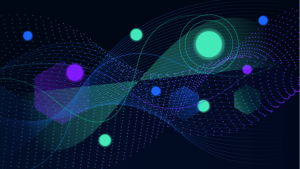In today’s increasingly complex environments, it’s simply impossible for a human operator to manually follow the highly dynamic nature of transactions within microservices and serverless functions. Even the best baseline approaches come with a tiny percentage of false-positive alerts, the number being directly proportional to the number of components you’re monitoring.
Back during Perform 2019, we introduced the next generation of the Dynatrace AI causation engine, also known as Davis®. Davis represents the next step in intelligent root-cause detection and reduction of alert spam by fully leveraging all the context information that Dynatrace collects. Over the last year, Dynatrace users have been able to switch between the original version of Davis and the enhanced root-cause detection.
What’s new?
With the release of Dynatrace version 1.181, the next generation of the Davis AI (Davis 2.0) becomes the default causation engine and will replace the previous version as the default for all new environments.
In detail this means:
- All newly created environments will automatically start with Davis 2.0 as the default AI engine.
- All existing Davis 1.0 environments will not be switched automatically. We’ll engage with the small fraction of users who use Davis 1.0 to help them switch to the new version.
- Dynatrace will target the end of Davis 1.0 for around the middle of 2020.
Key benefits of the Dynatrace Davis 2.0 AI causation engine
Read on for links to blog posts that highlight the key benefits you get with our next-generation AI causation engine. These blog posts, published over the course of this year, span a huge feature set comprising Davis 2.0, which will now become the default Dynatrace AI causation engine.
Save time by directly analyzing code-level information
With the unique code-level capabilities of Davis, we’ve reduced the number of clicks required to reach and understand code-level findings. When there’s a critical outage, this new feature will save you a lot of time compared to cumbersome and error-prone manual analyses of millions of service traces.
Define custom events that can either trigger deeper analysis or contribute additional contextual information to Davis
The improved configuration workflow for custom event alerting offers a lot of power in terms of defining additional metric-based events for your Dynatrace environment. By selecting event severity, you can decide if a problem should be raised, if the Davis AI should look at it, or if you’re fine with just a single alert or info event.
Seamlessly analyze full-stack information during root-cause detection
Follow transaction context and seamlessly analyze all the available full-stack information during root-cause detection. The ability to review all findings on the root-cause technology stack in one view saves a lot of clicks and allows you to visually correlate all the metric findings from top to bottom.
Reduce alert spam by detecting root causes without infrastructure thresholds
Instead of relying on events and thresholds, Davis 2.0 detects suspicious metric behavior by analyzing the value distribution of metrics. If the current metric distribution deviates significantly from the observed historic metric behavior, the respective component is marked as unhealthy, even if no threshold has been breached.
Enrich technical root-cause data with domain and/or business process-related information by ingesting external, third-party events into Davis
We opened up the Davis 2.0 AI causation engine to receive external, third-party events. By ingesting these in context with a Smartscape topology model, you get true causation insights and precise root-cause analysis.
All details about Davis 2.0 functionality and features can be found in Dynatrace Help under Problem detection and analysis.





Looking for answers?
Start a new discussion or ask for help in our Q&A forum.
Go to forum